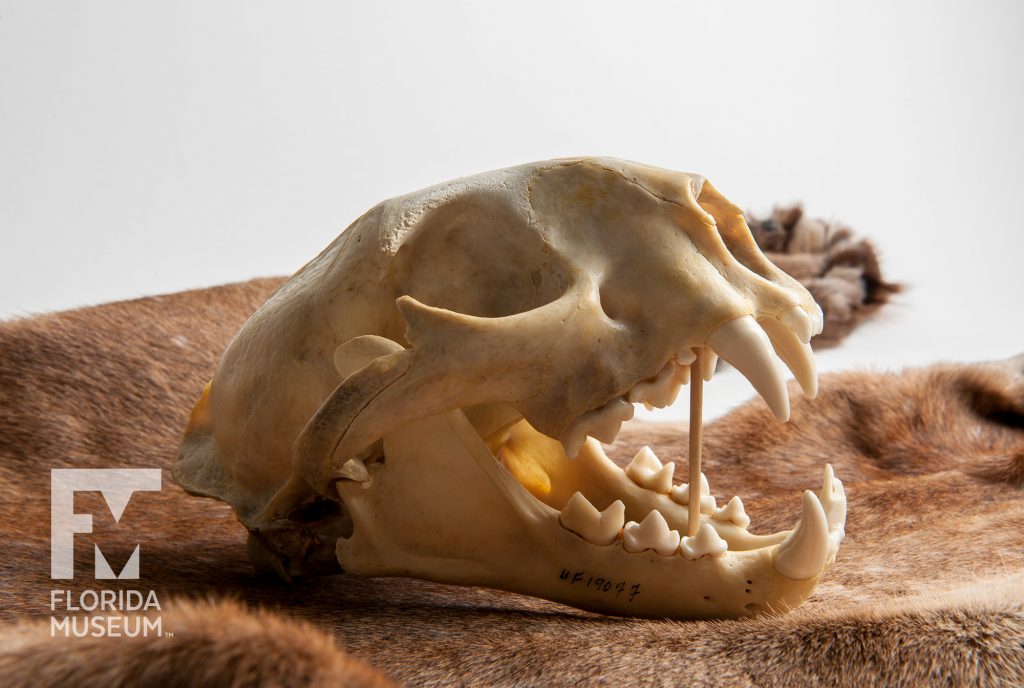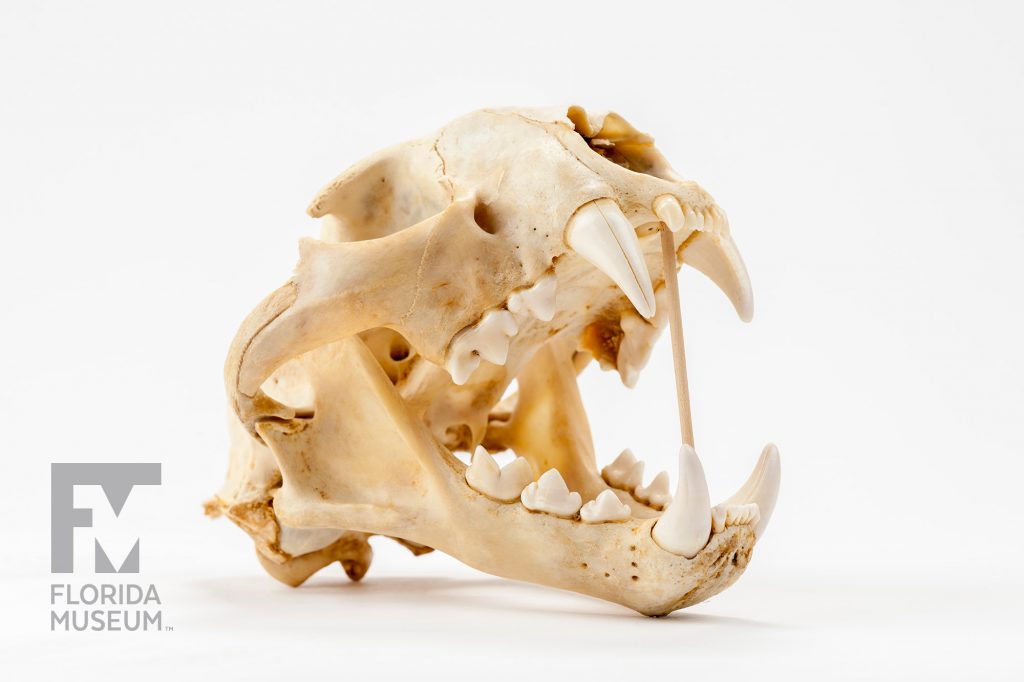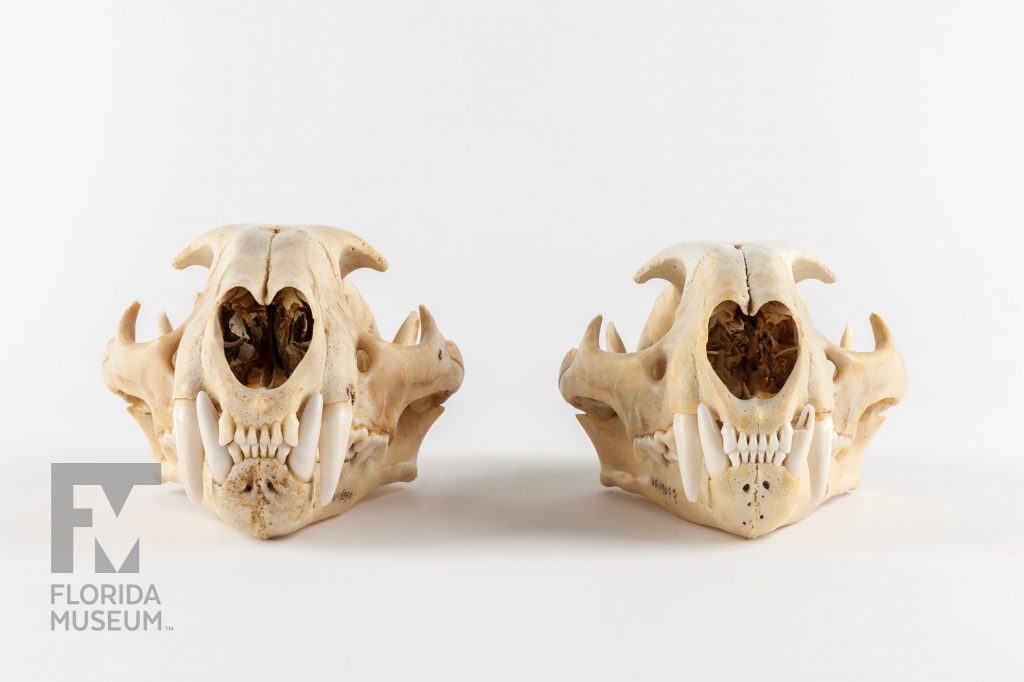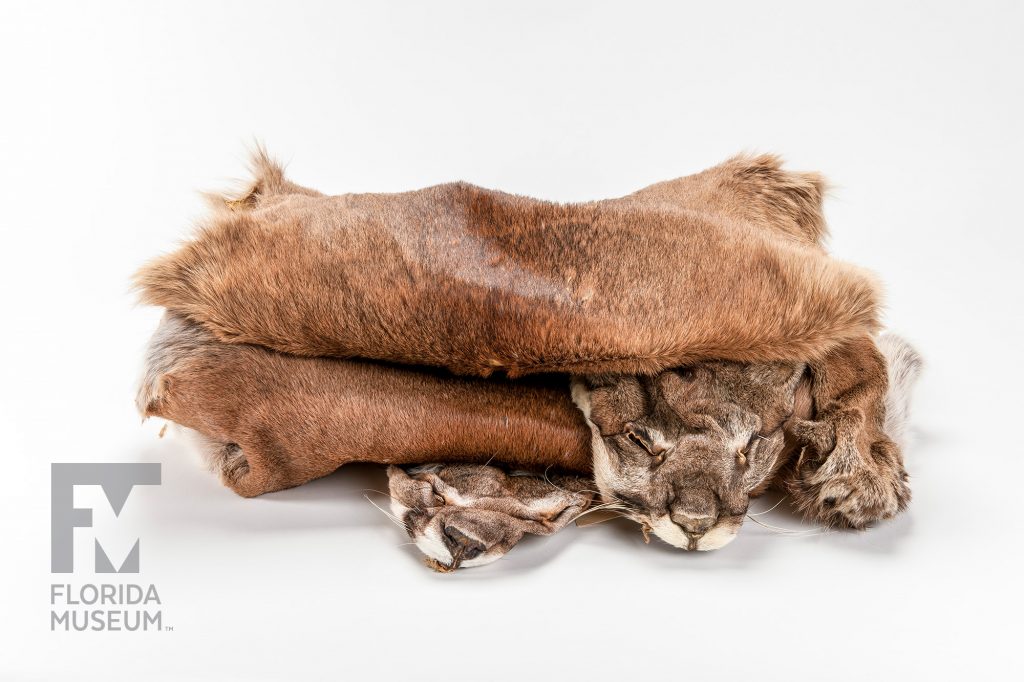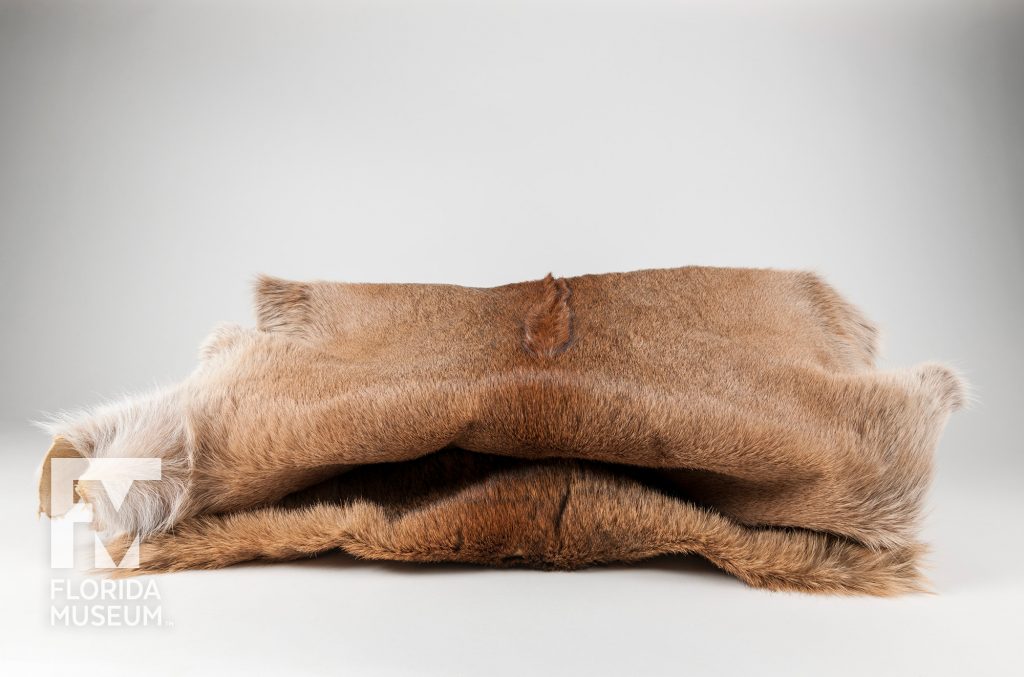Florida Panthers are an endangered subspecies of cougar living in South Florida forests and swamps. Once estimated to be as few as 20 panthers in the wild, the species has been brought back from the brink of extinction due to extensive conservation efforts.
Summary
Florida Panther (Puma concolor coryi)
Skull from Palm Beach Co., Florida, May 1983
Skin from Hendry Co., Florida, June 1990
Florida State Animal
Collection
Story
This skull seen here was very instrumental in helping further protections for the Florida Panther. Florida Panthers are an iconic mammal in Florida and are an excellent example of how federal protection and management can help a highly endangered species recover.
Florida Panthers are the only subspecies found still in the eastern United States. There were once many subspecies of panthers that were wide-ranging and numerous, but by the early 20th century they were almost hunted out of existence and in the 1990s which used Texas panthers, the Florida Panther population has rebounded and is estimated around 160 individuals.
This particular individual was shot by two hunters in Palm Beach County in 1983. There was considerable debate as to whether this individual was a Florida Panther or not, since if it was a Florida panther the hunters could be charged with killing a protected species, but if was not one of the Florida Panthers, they wouldn’t be prosecuted. Several experts weighed in by looking at the measurements of the skull and other skeletal elements, trying to determine the true origin of this panther. At the time, the results were inconclusive as to the true subspecies status, although now experts believe it was a Florida Panther. However, because of the debate, the protections for Florida Panthers was broadened to a “look-alike” law, where individuals could be prosecuted for killing any panther in the state of Florida, regardless of whether or not it was a Florida Panther.
Some Florida Panthers have distinctive markings that are unique to the subspecies, due to a history of inbreeding and limited gene flow. Those characteristics include a kinked tail and a unique patch of fur on the back of it like a cowlick. The hide shown here has a distinctive cowlick. The kink in the tail is not preserved in the hide, however, but this individual did have one.
Florida Panthers are only found in South Florida, such as in Everglades National Park and in Big Cypress National Park. However, males have been known to roam further. In fact, according to the Florida Fish and Wildlife Conservation Commission, the furthest-known location recently for a male panther was in Georgia. Recently, a female panther was spotted north of Caloosahatchee River, which has long been regarded as the northern limit for the population.
Verity Mathis
Collection Manager, Mammals*
Florida Museum of Natural History
Additional Information
The Florida panther is the state animal of Florida.
Read more: Florida panther conservation
Exhibit
On display Sept. 23, 2017-Jan. 7, 2018, Rare, Beautiful & Fascinating: 100 Years @FloridaMuseum celebrated the Museum’s rich history. Each Museum collection was asked to contribute its most interesting items and share the stories that make them special. Though the physical exhibit is closed, this companion website remains online, providing an opportunity to experience the Florida Museum’s most treasured specimens.
Exhibit Area: On the Brink
Theme: Success Stories
 Want to see more? Explore more than 300 breathtaking color photos of plants, animals, fossils and cultural heritage materials from the Florida Museum of Natural History’s collections in the award-winning book All Things Beautiful available from the University Press of Florida.
Want to see more? Explore more than 300 breathtaking color photos of plants, animals, fossils and cultural heritage materials from the Florida Museum of Natural History’s collections in the award-winning book All Things Beautiful available from the University Press of Florida.
*This title was accurate at the time the exhibit was on display in 2017. Please visit the collection website to verify current staff and student information.
